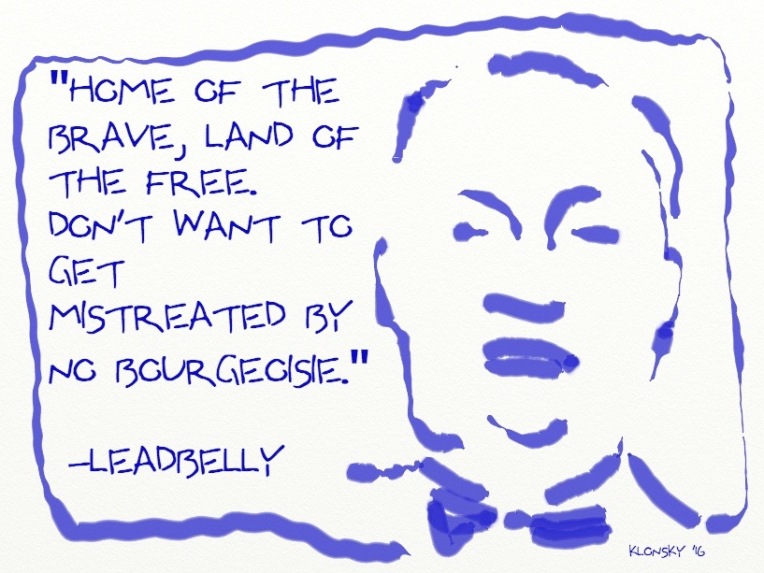
Earlier this year I did a series of quick drawings of educators who influenced me as a teacher. They can now be found, archived here.
This current series of quick drawings is (with all humility) inspired by the great 1963 book, Blues People, by Amiri Baraka. In 1963 Baraka went by the name, LeRoi Jones.
The book is still in print and read it if you haven’t. If you haven’t read it in a long time, do what I did and read it again.
Blues People is not just about the history of a specific genre of music or the people who made the music. It is about the singular contribution of African Americans to what has become American music and culture and to our American history as a people.
I am honored to say that I met Amiri Baraka on one occasion.
In his 1999 introduction to the republication of Blues People Baraka wrote
The tentative first title I gave the book was Blues, Black & White America. It was the contrasting aspect of the theme that first superficially captured me. That there was a body of music that came to exist from a people who were brought to this side as slaves and that throughout that music’s development, it had to survive, expand, reorganize, continue, and express itself as the fragile property of a powerless and oppressed People.
How did it do this? What was so powerful and desperate in this music that guaranteed its continued existence? Even beyond its creators existence? This is what pushed me. But as I began to get into the history of the music, I found that this was impossible without, as the same time, getting deeper into the history of the people. That it was the history of the Afro-American people as text, as tale, as story, as exposition, narrative, or what have you, that the music was the score, the actually expressed creative orchestration, reflection, of Afro-American life, our words, the libretto, to those actual lived lives. That the music was an orchestrated, vocalized, hummed, chanted, blown, beaten, scatted, corollary confirmation of the history. And that one could go from one to the other, actually, from the inside to the outside, or reverse, and be talking about the same things. That the music was explaining the history as the history was explaining the music. And that both were expressions and reflections of a people.
So that moving from the middle passage forward (and backward), as Jacques Roumaine said, from that “railroad of human bones…at the bottom of the Atlantic Ocean,” one traced the very path and life and development, tragedy, and triumph of Black people. How they have been “removed” from Africa and had been transformed by this hideous “trip” and by the context of their lives in the actual “West,” into a Western people. By the beginning on the nineteenth century,, Du Bois points out, the majority of us were “Americans.” (Here a pause for “canned” studio laughter!)
At each juncture, twist, and turn, as Black people were transformed, so was their characteristic music. It became emphatically clear to me that by analyzing the music, you could see with some accuracy what and why that change had been.














